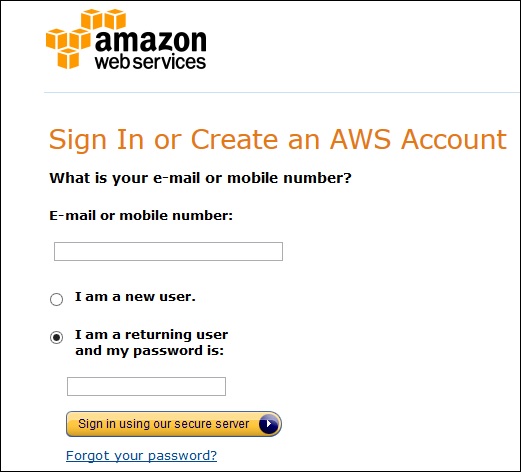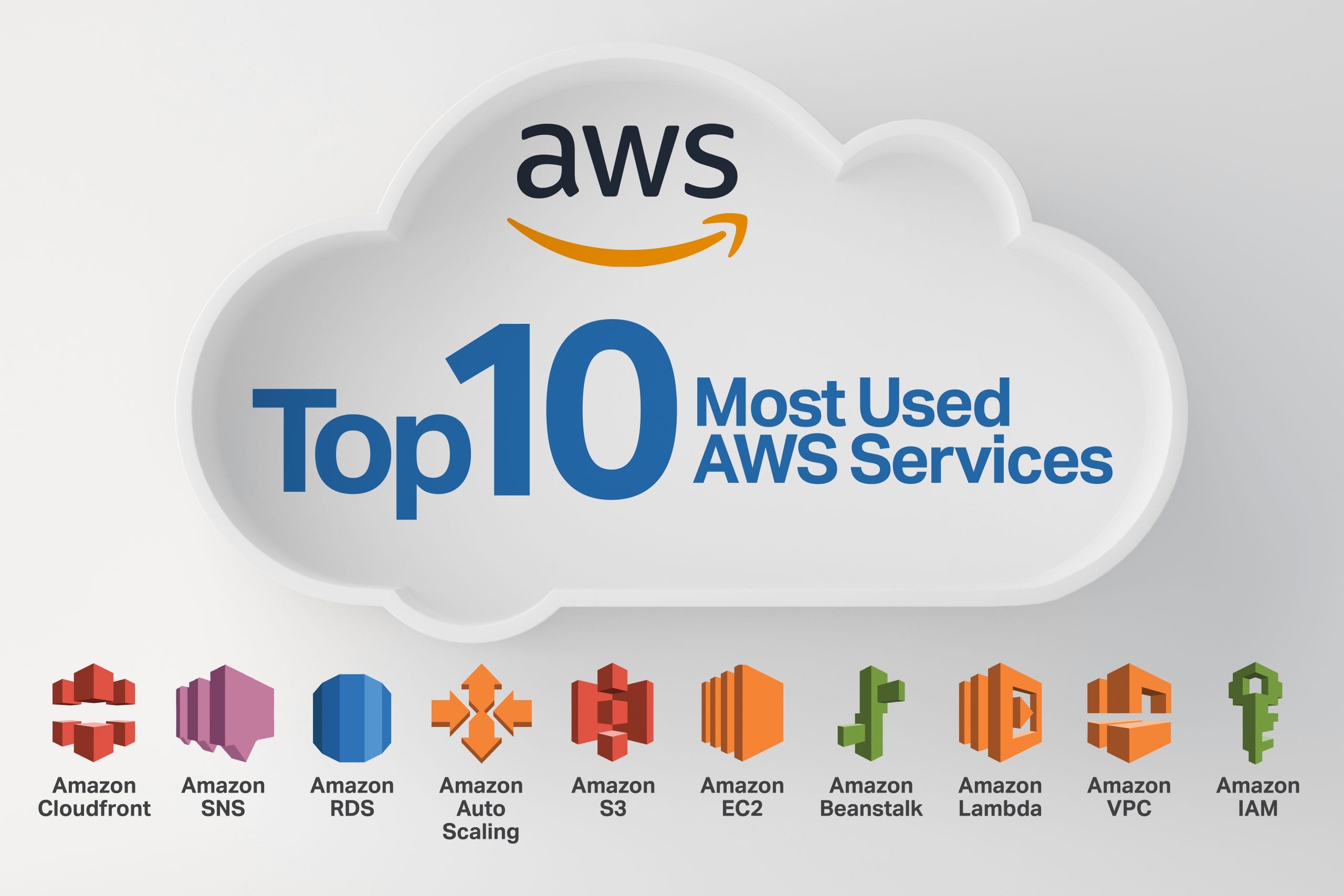What is AWS and Why Sign Up?
Amazon Web Services (AWS) is a leading cloud computing platform that offers a wide range of services and tools for building, deploying, and managing applications and workloads in the cloud. With AWS, businesses and individuals can access a scalable, flexible, and cost-effective infrastructure that allows them to grow and adapt to changing needs quickly and easily. Some of the main reasons why one might consider signing up for AWS include:
- Access to a wide range of services: AWS offers over 200 services, including computing, storage, databases, machine learning, data analytics, and security. This allows users to choose the right tools for their specific needs and workloads, and to build and deploy applications quickly and easily.
- Scalability and flexibility: AWS allows users to scale up or down as needed, providing a flexible and cost-effective solution for businesses of all sizes. With AWS, users can pay only for what they use, and avoid the upfront costs and long-term commitments associated with traditional infrastructure.
- Cost-effectiveness: AWS offers a variety of pricing models, including on-demand, reserved, and spot instances, that allow users to optimize their costs and get the most value out of their infrastructure. Additionally, AWS offers a number of cost-saving measures, such as volume discounts, reserved instances, and savings plans, that can help users reduce their overall spending.
- Security and compliance: AWS offers a wide range of security features and tools, such as identity and access management (IAM), encryption, and network security, that help users protect their data and applications. AWS also complies with a number of industry standards and regulations, such as PCI DSS, HIPAA, and GDPR, making it a trusted choice for businesses in regulated industries.
In short, AWS is a powerful and versatile cloud computing platform that offers a wide range of services, tools, and features for building, deploying, and managing applications and workloads in the cloud. By signing up for AWS, users can access a scalable, flexible, and cost-effective infrastructure that allows them to grow and adapt to changing needs quickly and easily, while ensuring the security and compliance of their data and applications.
Creating an AWS Account: A Step-by-Step Guide
To get started with AWS, you will need to create an AWS account. This process is straightforward and can be completed in a few simple steps. Here’s a detailed, step-by-step guide to creating an AWS account:
- Go to the AWS homepage (https://aws.amazon.com/) and click on the “Create an AWS Account” button. This will take you to the sign-up page.
- On the sign-up page, click on the “Create a new AWS account” button. This will take you to the account creation form.
- Fill out the account creation form with your name, email address, and password. Make sure to provide accurate and complete information, as this will be used to verify your identity and set up your account.
- After filling out the form, click on the “Continue” button. This will take you to the payment information page.
- On the payment information page, enter your payment details, such as your credit card number and billing address. AWS accepts a wide range of payment methods, including credit cards, debit cards, and bank transfers.
- After entering your payment details, click on the “Create Account and Continue” button. This will take you to the identity verification page.
- On the identity verification page, you will need to verify your email address and phone number. AWS will send you a verification code to your email address and phone number, which you will need to enter in the form provided.
- After verifying your email address and phone number, click on the “Create Account” button. This will take you to the AWS Management Console, where you can start using AWS services and tools.
Congratulations! You have now created an AWS account. Remember to keep your login credentials and payment information secure, and to follow best practices for managing your AWS environment. With AWS, you can access a wide range of services and tools for building, deploying, and managing applications and workloads in the cloud, quickly and easily.
Understanding AWS Services: An Overview
AWS offers a wide range of services and tools for building, deploying, and managing applications and workloads in the cloud. Here are some of the main services and their main use cases:
- EC2: Amazon Elastic Compute Cloud (EC2) is a web service that provides resizable compute capacity in the cloud. EC2 allows users to quickly and easily launch and manage servers, and to scale up or down as needed. EC2 is ideal for running web applications, batch processing, and data warehousing.
- S3: Amazon Simple Storage Service (S3) is a highly durable and scalable object storage service. S3 allows users to store, retrieve, and manage data in the cloud, and to access it from anywhere in the world. S3 is ideal for storing and serving static assets, such as images, videos, and documents.
- RDS: Amazon Relational Database Service (RDS) is a managed relational database service. RDS allows users to set up, operate, and scale a relational database in the cloud, without the need for complex database management tasks. RDS is ideal for running relational databases, such as MySQL, PostgreSQL, and Oracle.
- Lambda: AWS Lambda is a serverless compute service that allows users to run code without provisioning or managing servers. Lambda allows users to focus on building applications, rather than managing infrastructure. Lambda is ideal for running event-driven applications, such as real-time file processing and data transformation.
These services, along with many others, form a comprehensive cloud computing platform that allows users to build, deploy, and manage applications and workloads in the cloud quickly and easily. By signing up for AWS, users can access these services and start building and deploying applications in the cloud, taking advantage of the scalability, flexibility, and cost-effectiveness of AWS.
Exploring AWS Pricing: Cost-Effective Solutions for Your Needs
AWS offers a variety of pricing models that allow users to pay for only the resources they use, and to scale up or down as needed. This flexibility and cost-effectiveness is one of the main benefits of using AWS, and allows businesses of all sizes to access a powerful and scalable infrastructure without the need for large upfront investments.
Here are some of the main pricing models offered by AWS:
- On-Demand: On-Demand pricing allows users to pay for resources on an hourly basis, without any long-term commitments. This is ideal for users who have variable workloads, or who need to quickly scale up or down in response to changing demands.
- Reserved: Reserved pricing allows users to reserve resources for a period of time, in exchange for a discounted price. This is ideal for users who have predictable workloads, or who want to save money by committing to a longer-term contract.
- Spot: Spot pricing allows users to bid on unused resources, and to pay a discounted price for these resources. This is ideal for users who have flexible workloads, or who want to save money by using resources that would otherwise go unused.
To estimate and manage costs, AWS provides a number of tools and resources, such as the AWS Pricing Calculator, the AWS Cost Explorer, and the AWS Budgets. These tools allow users to estimate the cost of their resources, to monitor their usage and spending, and to set budgets and alerts to help them stay within their budget.
By using these pricing models and tools, users can ensure that they are getting the most value out of their AWS resources, and that they are only paying for what they need. This flexibility and cost-effectiveness is one of the main reasons why businesses choose AWS, and allows them to scale up or down as needed, providing a flexible and affordable solution for businesses of all sizes.
Getting Support: AWS Customer Service and Community Resources
AWS offers a wide range of support options to help users get the most out of their AWS resources. From technical support plans to community forums and documentation, AWS provides a wealth of resources to help users troubleshoot issues, learn new skills, and connect with other AWS users.
Here are some of the main support options available to AWS customers:
- Technical Support Plans: AWS offers a range of technical support plans, from Developer to Enterprise, that provide access to AWS support engineers, technical resources, and tools. These plans offer different levels of support, from basic to premium, and allow users to choose the level of support that best meets their needs and budget.
- Forums: AWS forums are a great place to connect with other AWS users, ask questions, and share knowledge. These forums are active and engaged, and cover a wide range of topics, from general questions to specific services and use cases. Users can search for answers, post questions, and participate in discussions, and can even earn badges and recognition for their contributions.
- Documentation: AWS provides extensive documentation, including user guides, API references, and tutorials, to help users get started with AWS and learn how to use its services and tools. This documentation is constantly updated and improved, and provides a wealth of information for users of all levels of experience.
To access these resources and get help when needed, users can visit the AWS Support Center, where they can find links to technical support plans, forums, documentation, and other resources. The AWS Support Center also provides access to the AWS Knowledge Center, where users can search for answers to common questions, and to the AWS Trusted Advisor, which provides recommendations for improving the performance, security, and cost-effectiveness of AWS resources.
By using these support options, users can ensure that they are getting the most value out of their AWS resources, and that they have access to the help and resources they need to succeed in the cloud.
Securing Your AWS Environment: Best Practices for Data Protection
Security is a top priority for AWS, and the platform offers a wide range of features and tools to help users protect their data and applications. From identity and access management (IAM) to encryption and access control, AWS provides a comprehensive security solution that is both robust and flexible.
Here are some best practices for securing your AWS environment:
- Use IAM to manage access to your AWS resources: IAM allows you to create and manage users, groups, and roles, and to control access to AWS resources. By using IAM, you can ensure that only authorized users have access to your resources, and that they have the appropriate level of access.
- Use encryption to protect your data: AWS offers a range of encryption options, including server-side encryption (SSE) and client-side encryption, to help you protect your data. By using encryption, you can ensure that your data is confidential, and that it cannot be accessed by unauthorized users.
- Use access control to restrict access to your resources: Access control allows you to restrict access to your AWS resources based on a variety of factors, such as IP address, time of day, and user agent. By using access control, you can ensure that only authorized users and devices have access to your resources.
By following these best practices, you can help ensure the confidentiality, integrity, and availability of your data, and protect your AWS environment from unauthorized access and data breaches. AWS provides extensive documentation and resources to help you secure your environment, and offers a range of technical support plans to provide additional assistance and guidance.
Next Steps: Building and Deploying Applications on AWS
Now that you have a basic understanding of AWS and its services, it’s time to start building and deploying applications on the platform. Here are some tips to help you get started:
- Choose the right services for your needs: AWS offers a wide range of services, each with its own unique features and capabilities. When choosing services, consider your specific requirements, such as scalability, performance, and cost, and select the services that best meet your needs.
- Design scalable and secure architectures: When building applications on AWS, it’s important to design scalable and secure architectures that can grow and adapt to changing requirements. Use features such as auto-scaling, load balancing, and security groups to ensure that your applications are scalable, secure, and highly available.
- Optimize performance: To ensure optimal performance, consider factors such as network latency, storage performance, and instance type. Use tools such as CloudWatch and the AWS Performance Testing service to monitor and optimize the performance of your applications.
AWS provides extensive documentation, tutorials, and resources to help you get started with building and deploying applications on the platform. From simple web applications to complex, distributed systems, AWS offers the tools, services, and support you need to succeed in the cloud. So why wait? Sign up for AWS today and start exploring its many features and services.
Conclusion: Embracing the Future of Cloud Computing with AWS
In conclusion, AWS is a powerful and flexible cloud computing platform that offers a wide range of services and benefits for businesses of all sizes. From scalability and flexibility to cost-effectiveness and access to a wide range of services, AWS provides a comprehensive solution for building, deploying, and managing applications in the cloud.
If you’re ready to take the next step and start building and deploying applications on AWS, sign up for an account today. The process is simple and straightforward, and you can be up and running in no time. And with a wide range of support options and community resources available, you’ll never be alone on your journey to the cloud.
So why wait? Embrace the future of cloud computing with AWS and start building, deploying, and managing applications in the cloud today. With AWS, the possibilities are endless and the benefits are clear. Sign up now and start exploring the many features and services that AWS has to offer.








